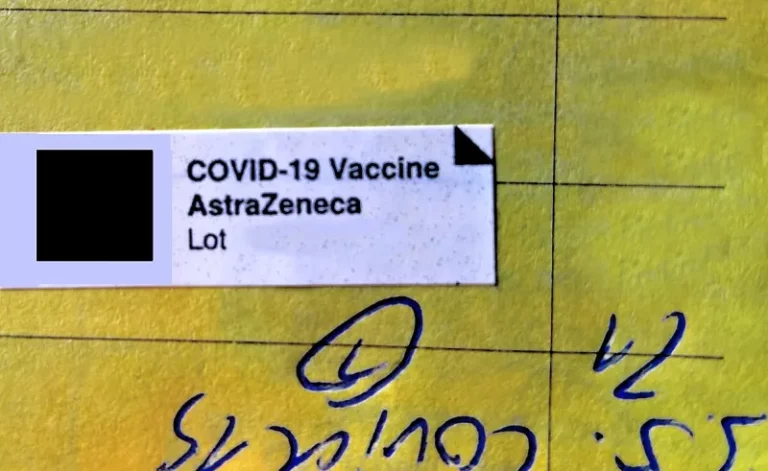Researchers Announce Results of New COVID sa-mRNA Vaccine
New study findings announced updated results from a follow-up analysis of a phase 3 study that evaluated the ARCT-154 booster dose. Researchers reported that ARCT-154 displayed a longer immune response 6 months prior to vaccination to prevent infection of the Wuhanstrain and Omicron BA.4/5.
The study authors noted that ARCT-154 is the first approved self-amplifying messenger RNA(sa-mRNA) COVID-19 immunization. The difference between mRNA and sa-mRNA vaccines is self-amplification, and sa-mRNA vaccines can help the body make more mRNA and protein to increase the immune system response — both providing protection against infectious disease.
ARCT-154 was compared to Comirnaty (Pfizer) and was administered at one-sixth of the dose in a randomized, double-blind, active-controlled study that was conducted in Japan at 11 sites, according to study authors.
Few Nursing Facility Residents and Staff Have Received the Latest COVID Vaccine
KFF analysis found that despite over one-fifth of all U.S. COVID-19 deaths occurring in long-term care facilities, as of January 14, 2024, only 38% of residents and 15% of staff were “up-to-date” with their COVID-19 vaccines, which the CDC defines as having received the updated Fall 2023 vaccine. Those rates are lower than the uptake was for the 2022 vaccine.
This data note also finds lower uptake rates for for-profit facilities and state uptake rates that vary from 20% to 63%. Data for this analysis include 14,318 nursing facilities (96% of all nursing facilities, home to 1.2 million residents) that had reported COVID-19 vaccination data as of January 21, 2024.
Uptake of the most recent COVID-19 vaccine is lower among nursing facility residents and staff than uptake was for the fall 2022 vaccine: Only 38% of residents and 15% of staff have received the new vaccine.
In comparison, at the same point in time last year, 50% of residents and 22% of staff had received the updated vaccine. Those rates represent the share that received the newly available COVID-19 vaccines, 18 weeks after each shot was made available to the public. These rates are much lower than the 87% of residents and 88% of staff who received their primary vaccination series when measured in September 2022.
On January 1, 2024, the CDC changed the way it collects data to calculate the percentage of staff who are up to date with their COVID-19 vaccination. CMS reports that it may take facilities some time to adapt to the new methodology.
Mikael Dolsten Is Always ‘Open to Change’ as He Preps Pfizer’s Entry Into Obesity’s 2nd Wave
If you ask Pfizer’s chief scientist Mikael Dolsten, M.D., Ph.D., what the next pandemic will be, you may be surprised at the answer. It’s not viral or respiratory, and, in fact, it’s here now. It’s obesity, and, luckily, the drugs are finally here to treat it.
Pfizer missed out on the first wave of the global obesity drug market. Peers Eli Lilly and Novo Nordisk are much further ahead with the injectable drugs Zepbound and Wegovy, respectively. But Dolsten and co. expect to make up ground, thanks to Pfizer’s background in developing oral small-molecule drugs.
That led to three different oral GLP drugs, which could someday become a major part of Pfizer’s portfolio. The furthest along is danuglipron, which is in phase 2b. But even with the weight of the Pfizer organization, the obesity program has faced some issues.
One of the candidates, lotiglipron, was cut last year after liver safety concerns were raised. Pfizer then centered around danuglipron, even though more than half of the people taking the med twice a day in a midphase test dropped out due to intolerability. About 40% dropped out of the placebo cohort, too.
Up to 73% of people taking danuglipron reported nausea. Rates of vomiting and diarrhea hit 47% and 25%, respectively.
Trial Offers Hope for Millions That Jab Could Prevent Rheumatoid Arthritis
Scientists have discovered a jab that could prevent rheumatoid arthritis (RA), a development experts say could offer hope to millions at risk of the disease.
RA is a chronic disease that causes inflammation in the body and triggers pain in the joints. About 18 million people globally are affected by the condition, which can lead to heart, lung or nervous system problems, according to the World Health Organization.
Now researchers have found that an existing drug for RA, which patients can inject into their stomach or thigh, could help slow its progression in those with early symptoms or stop it in its tracks altogether.
Abatacept is prescribed to people who already have RA, but a team led by King’s College London explored whether it could prevent it in those deemed at risk. The drug — administered in the hospital through a drip or at home with weekly injections — works by targeting the cause of inflammation.
Replicate’s srRNA Rabies Vaccine Effective in Phase 1
San Diego-based Replicate Bioscience, a clinical-stage company, reported Wednesday that its self-replicating RNA (srRNA) rabies vaccine induced strong immune responses in Phase 1 clinical trial, even at extremely low doses — doses that contained fractions of the volume found in messenger RNA COVID vaccines on the market.
The company reported that at all three doses tested — which went from 10 micrograms, a third of the volume of Pfizer’s COVID vaccine, down to an ultra-low 0.1 micrograms — the experimental vaccine-induced neutralizing antibody titers at levels that exceeded the World Health Organization’s defined surrogate level of protection for rabies virus. (Replicate’s press release said “most” recipients of the 0.1 mcg-dose arm generated antibody titer levels that met the WHO’s standard.)
The vaccine, RB1-4000, was well tolerated at all doses tested, with no severe adverse events among the 84 people in the trial. “These results have exceeded our expectations and show the power and potential of our srRNA technology,” CEO Nathaniel Wang said.
New Cancer Vaccines Could Treat Some Types of Pancreatic, Colorectal and Other Deadly Forms of the Disease
Pancreatic cancer is among the deadliest types of cancer, but a new experimental therapeutic vaccine appears promising for people with the most common form of the disease.
In January researchers published results of a phase 1 trial that involved people with so-called KRAS-mutated pancreatic or colorectal cancer who were at high risk of relapse and showed early signs of tumor resurgence. The new vaccine delivers tumor-targeting molecules directly into the lymph nodes. There, it activates T cells, immune cells that play a critical role in the body’s disease-fighting response.
The trial included 25 people with pancreatic or colorectal cancer who had previously undergone surgery, seven of whom also had received radiation therapy. They were given up to 10 doses of the vaccine known as ELI-002, and the results were promising: 84% of all participants had positive T cell responses — and all of those who received higher doses had a response. The results of the trial, which was funded by Boston-based biotech company Elicio Therapeutics, were published in Nature Medicine.
This is just the latest example of how scientists are using vaccines to battle common but deadly cancers. Vinod Balachandran of Memorial Sloan Kettering Cancer Center (MSK) and his colleagues used mRNA technology — like that used in the COVID vaccines — to fight pancreatic cancer. The results of their phase 1 trial were published in May 2023. And last December the companies Moderna and Merck announced positive results from their latest study of an mRNA vaccine used in combination with the immunotherapy drug Keytruda for treating melanoma.
CARB-X Awards $1.2 Million for Developing Oral Antibiotics for Resistant Infections
CARB-X announced today that it is awarding researchers at Harvard University $1.2 million to develop oral antibiotics for antibiotic-resistant lower respiratory tract and skin and other soft-tissue infections (SSTIs).
The award to the Andrew G Myers Research Group at the Harvard Department of Chemistry and Chemical Biology will support the development of oral lincosamide antibiotics that have been synthetically enhanced to overcome bacterial defense mechanisms.
Lower respiratory tract infections were the fourth leading cause of death globally in 2019, according to the World Health Organization, causing an estimated 2.6 million deaths. SSTIs account for 31% of all healthcare-associated infections. The bacteria that cause these infections are growing increasingly resistant to first-line antibiotics, particularly in lower-resource settings.
Erin Duffy, Ph.D., CARB-X’s head of research and development, noted that more than 70% of the antibiotics launched since 2010 lack an oral option.
Suggest a correction







